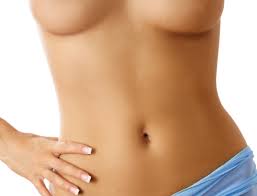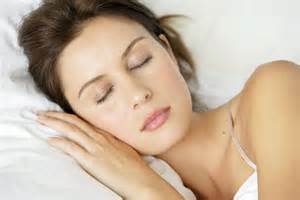By Sandra Tyler
19 Apr, 2015
Botox, Breast Augmentation, Butt Augmentation, Comfort Anesthesia, Cosmetic Getaways, Ear Surgery, Esthetician, extractions, Face Lift, facial, facial rejuvenation, facials, Featured Procedures, Fillers, hair removal, Juevederm, Labiaplasty, Laser, liposuction, Male Surgery, Misc, News & Blogs, Rhinoplasty, skin care, spa, Special Offers, Tummy Tuck
breast augmentation, facelift, lifestyle lift, lifstyle, liposuction, mommy makeover, tummy tuck
The 2014 plastic-surgery statistics will be released later today by the American Society for Aesthetic Plastic Surgery (ASAPS). Thanks to an advance peek, I can report that butts are getting bigger, while breasts are getting smaller.
Buttock augmentations are up 86 percent over 2013. Michael C. Edwards, a plastic surgeon and the president of the ASAPS notes that most women don’t want giant backsides, they just want more shapely ones. The other big news is breast revisions, which are up 30.4 percent. Many attribute that rise to aging implants in need of replacement, along with many women’s desire to switch from saline to silicone-gel-filled implants, which may not have been available when they originally had surgery. What’s more, insiders say most of these women are exchanging their old implants for smaller replacements.
The other news in the numbers is a five percent drop in overall procedures: 10,663,607 in 2014, down from 11,419,610 in 2013. The decrease was mostly in minimally-invasive procedures like Botox and fillers. No explanation for this was offered by the ASAPS, but could it be what I call injection fatigue? Many women I’ve spoken to don’t want to return again and again for refills. Surgical procedures fell only 1.5 percent from 1,883,048 to 1,764,956, a drop that the number crunchers say is not statistically significant.
Fat—and getting rid of it—is still a high priority. In recent years the top surgical procedures for women have flipped back and forth between breast implants and liposuction. In 2014, liposuction held the number one spot, followed by breast augmentation (down 8.5 percent), tummy tuck, blepharoplasty (or eye lift), and in fifth place, the breast lift. Facelifts are in eighth place.
Liposuction may still be king (or is it queen?) in the surgical department, but non-surgical fat reduction with devices such as CoolSculpting and VASERshape rose a whopping 42.7 percent, from 94,922 in 2013 to 135,448 in 2014. That number could rise even more this year if ATX-101, an injection for fat reduction under the chin, gets FDA clearance, which it’s expected to receive.
More
By Sandra Tyler
16 Mar, 2015
Esthetician, extractions, facial, facial rejuvenation, skin care
beauty sleep, Cosmetic Surgery, dark circles, facial, plastic surgery, skin care, skin repair, skin restoration
There are numerous myths about beauty and skin care that keep popping up no matter how wrong they are, yet every once in a while a beauty myth turns out to be true. Such is the case with beauty sleep. It’s a real thing, and you definitely need to be getting enough of it.
It could be you didn’t need to read what I wrote above in order to know that beauty sleep is a real thing. You know it just from looking in the mirror after not getting enough sleep. Lack of sleep causes dark under-eye circles, your skin looks less than great, and your fine lines or wrinkles appear more pronounced. In the WebMD article Are You Getting Enough Beauty Sleep? dermatologists had the following to say about beauty sleep:
“Lack of sleep causes blood vessels to dilate, causing the look of dark circles,” says dermatologist Sonia Badreshia-Bansal, MD, of the University of California, San Francisco. Sleepily rubbing your eyes doesn’t help those dark rings.
Not enough sleep can also make you more stressed, and everyone can see that tension. “It makes you look angry, tired, sad, and certainly older,” says New York City dermatologist Doris Day, MD.
What exactly is happening to your skin when you do not get enough sleep? Dr. Ellen Marmur explains in her excellent book Simple Skin Beauty: Simply put, if you sleep too little, you’re not giving your body time to repair itself. The nervous system has two states that are in balance. The sympathetic system, which is more in control while we’re awake, keeps the blood flow near the core of the body. While we sleep, the parasympathetic nervous system runs the show and blood flow shifts to the skin. Additionally, skin isn’t under attack from the sun and the elements at night. This relaxed parasympathetic state allows greater circulation and oxygen flow to the skin, or peripheral vasodilation in medical terms. This is when the skin gets a lot of internal attention and repair mechanisms go into action, much like the night workmen at Disneyland who fix and restore the rides and clean the place up before the part opens the next day. Receptors spring to life within the blood vessels and grab amino acid molecules (the building blocks) to help build more collagen, and fluid and toxins are drained.
Without enough rest, the skin doesn’t get this repair and restoration, and all that important activity isn’t being done. One example: when excess fluid near the skin isn’t transported to the bladder to be excreted, the result is puffiness. … It shows up most around the eyes because there’s less fat in that area, so water retention is more apparent.
After all this bad news luckily there is a bit of good news when it comes to sleep and your skin. According to Dr. Day our skin recovers quickly once you are able to get a good night’s rest. So just because you missed out on getting enough sleep a few nights in a row doesn’t mean that you’ve damaged your skin for good. And just how much sleep do you need? That varies from individual to individual. Some people do fine with only 7 hours of uninterrupted sleep while others need 8 or 9 hours. That is something that you have to determine for yourself.
In order to make sure you get your much needed shut-eye create a soothing bedtime routine. Stop drinking caffeinated drinks in the afternoon, keep to a set sleep schedule as much as possible, and make your bedroom a sleep sanctuary. Your skin will thank you for it.
More
By Sandra Tyler
16 Mar, 2015
Esthetician, facial, facials, skin care, spa
blackheads, clogged pores, facial, skin care, skin type, spa, treat yourself
How often you should get a facial depends on your skin type — normal, combination, dry, or oily. If you have oily, acne-prone skin with breakouts, blackheads and clogged pores, you should get a facial every two weeks until it is cleared out and calmed down. As you skin improves, you can stretch it out longer until you’re on a schedule where your skin stays relatively clean and clear. If you have normal, combination, and dry skin, a once-a-month facial is usually fine.
Skin condition is whatever the esthetician notices at the time of your facial — dryness, dehydration, redness, blackheads, dull skin, etc. You might come more often than monthly if you have acne, a lot of blackheads or whiteheads you want to get cleared out, or if you have skin that would benefit from a series of treatments like peels, light therapy, or microdermabrasion.
Other Factors That Affect How Often You Should Get A Facial
- Skin Care Goals. If you want to have your best possible skin for a lifetime, find a great esthetician early in life, get on a good skin care regime, and follow it. Not everyone puts a high priority on personal appearance.
- Age. Unless they have oily skin and breakouts, younger people can usually get facials less frequently because their skin naturally generates new cell growth faster. When you’re young, your biggest priority is to be on a good skin-care regime, keep the skin clear of blackheads, and have a strategy to deal with breakouts. As you age, you might go more often and spend more on treatments that are done in a series, such as peels, light therapy, or microdermabrasion.
- Budget. Income and budget affects how much money you have available for facials and skin care. Try to at least get a facial once every three months, and make the investment in quality products.
- Where You Live. Urban environments have more pollution that make your skin dirtier. If you’re prone to blackheads, you might need to be rigorous about your once-a-month schedule instead of stretching it out to six weeks.
Is There Such A Thing As Too Many Facials? Yes! Unless you have oily skin that needs clearing up or you’re doing a series that requires you to come in every week or two, once a month is sufficient. You can sensitize your skin if you overdo it.
More
* He or she is impeccably groomed, warm and friendly.
* She is a stickler for cleanliness and sanitation. She keeps a clean table and washes her hands before she begins touching your face. If you see a dirty environment or sticks in a messy wax pot, that’s not a good sign.
* The esthetician gives you a relaxing facial customized to your skin. She can do extractions without causing too much discomfort and is responsive to your pain threshold.
* He can answer any questions you have about what he’s doing and why.
* The good esthetician follows your lead in terms of how much “chat” there is. It’s your time!
* She asks about your home skin care routine and advises you on how to take care of your skin between facials. She advises you on what products are best suited for your skin without being pushy.
* A good esthetician recognizes skin problems that require a dermatologist. If you have a problem that needs a medical doctor, the esthetician lets you know.
Licensing requirements for estheticians vary by state. Most states require 600 hours of training, but Florida is considerably less strict, with just 260 hours of training. Feel free to ask where they were trained and what kind of program they went through.
If you’re interested in becoming part of the spa industry, read more about finding spa jobs, going to massage school, or going to esthetician school.
More




